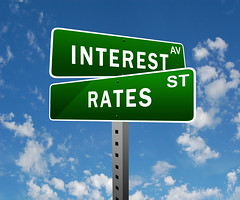Understanding And Avoiding Credit Card Interest Rates
It should come as no surprise, the vast majority of consumers in America use credit cards. They have become a household lending product and, provide a great service in some ways. However, the service is not free! Each and every credit card offer you come across will have it’s own unique set of interest rates and fees that will be charged every month. Unfortunately, most people simply don’t understand how credit card interest rates work so, they become unarmed in the battle against credit card debt. With that said, below is a detailed breakdown of credit card interest rates and how you can pay your way around hundreds or even thousands of dollars in interest over the life of your debt!
Credit Card Interest Rates 101
There are 4 different types of interest rates that are commonly charged on credit cards. Each interest rate is charged to a portion of your balance that is accumulated in a specific way. Here are the 4 different rates and the balances that they will apply to:
- Purchase Interest Rates – Purchase interest rates are the interest rates that will be charged to balances accumulated through day to day purchases. For instance, when you use your credit card at a gas station, grocery store, movie theater or for any other purchase that ends in the exchange of products or services, you will be charged the purchase interest rate.
- Cash Advance Interest Rates – Cash advance interest rates are often times overlooked and, really shouldn’t be! In most cases, the cash advance interest rate on a credit card is higher than the purchase interest rate. The cash advance rate will be charged to balances you accumulate through cash transactions such as cash back at a grocery store, ATM withdraws and any other transaction tat results in the transfer of money without the exchange of a product or service.
- Default Interest Rates – Default interest rates are often times called the punishment rate and, for good reason. These interest rates are designed as a form of punishment for late payments, over-limit transactions and any other act that defaults against the original terms and conditions of the credit card. In many cases, default interest rates can be as high as 29.99%. Not to mention, they are usually charged to entire credit card balances.
- Promotional Interest Rates – I chose to place promotional interest rates as the last in the list for 2 reasons. First off, not everyone will have a promotional interest rate on their credit card! Also, if you do have a promotional interest rate, it’s only for a short period of time. These are low short term interest rates that will apply to a portion of or all of your balance depending on the promotion for the specific credit card you have.
It is also important that you understand how these interest rates are calculated. In most cases, credit card interest rates are calculated on a daily compound basis. This means that you are charged interest every single day. Lets see how this looks on a chart for a $7,122.00(National Household Average Credit Card Debt) balance over the course of 30 days with a 14.99% interest rate. On day 2, your balance would be charged $2.92 in interest, increasing your balance to $7,124.92. The next day you would be charged $2.93 instead of $2.92 because of your newly increased balance. On day 30, you would be charged $2.96 more cents for a grand total of $88.26 in interest over the thirty day period. This points out a crucial factor in interest rates, as your balance goes up, your interest charges go up, as your balance goes down, your interest goes down! This is the basic concept of the constant payment method (We’ll go over that later).
Interest And Your Minimum Payment
In most cases, credit card companies calculate minimum payments based on interest plus a percentage of the balance. The average that I’ve noticed lately has been 1% of your balance plus monthly interest charges. So, in the case of the average American household, $72.10 would be paid to principle as $88.26 would be paid to interest charges. So, the average American spends more in credit card interest than paying down their balances when sending minimum payments.
Putting All Of This Together To Save Money On Credit Card Interest Rates
Now, we are armed with knowledge that will allow us to work around a lot of the interest that we would have to pay. The best part about it is, we don’t have to do too much thinking, the ground work has been laid out in 2 different payment plans for us. They are called the constant payment and debt stacking payment plans. Here is a quick breakdown of those:
- Constant Payment Plan – Knowing that your credit card minimum payment is based on your balance, as you make payments, your minimum payment will be reduced because you will be paying down your balance. So, even if all you can afford to pay now is your minimum payment, in a month or two, you should be able to send a little more. That extra payment will reduce your balance further reducing your minimum payment and allowing you to pay even more the following month. All you need to do is decide how much you will commit to as your constant monthly payment.
- Debt Stacking Payment Plan – This plan was designed to attack the highest interest rates that you are being charged. In this plan, you simply send minimum payments to all of your lenders except the one that charges you the highest interest rate. All money that is left in your constant payment, principal and extra should be sent to your highest interest rate credit card. In doing so, you avoid having to pay high interest rates for extended periods of time.
Thanks For Reading
I hope that you’ve enjoyed this article. As you can see, avoiding interest can actually be pretty easy! Please come back in the future to read more of my work here on www.SaveALittleMoney.com!
About The Author – Joshua Rodriguez
This article was written by Joshua Rodriguez, proud owner and founder of CNA Finance and avid freelance personal finance writer. Join the conversation about this article, Joshua’s this article or any personal finance topic of your choice on Google+!

Category: Credit Card






